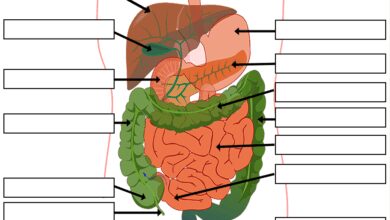System Notifications: 7 Powerful Secrets You Need to Know
Ever wonder how your phone alerts you about updates, messages, or low battery? That’s the magic of system notifications—silent messengers keeping you in the loop. Simple, yet essential, they shape how we interact with technology every single day.
What Are System Notifications and Why They Matter

At the heart of every digital device lies a communication layer designed to inform, alert, and guide users. These signals come in the form of system notifications—automated messages generated by an operating system or core software to deliver critical information without user initiation.
Defining System Notifications
System notifications are real-time alerts produced by an operating system (OS) to communicate events such as software updates, hardware status, security warnings, or background processes. Unlike app-specific alerts (like a WhatsApp message), these originate from the OS itself—be it Windows, macOS, Linux, Android, or iOS.
- They are triggered by system-level events like low disk space or failed updates.
- They often bypass user apps and appear in dedicated UI zones like the notification center or system tray.
- They can be visual, auditory, or haptic, depending on device settings and context.
According to Microsoft’s documentation on Windows notifications, system-level alerts are prioritized to ensure users don’t miss crucial operational changes (Microsoft Learn).
The Role in User Experience
System notifications act as a bridge between the machine and the user. They translate complex backend operations into digestible, actionable messages. For instance, when your laptop battery drops to 5%, a notification prompts you to plug in—preventing unexpected shutdowns.
“Good system notifications don’t interrupt; they inform.” — Jakob Nielsen, Nielsen Norman Group
They enhance usability by reducing cognitive load. Instead of manually checking system status, users rely on timely cues. This is especially vital in enterprise environments where system health directly impacts productivity.
How System Notifications Work Across Platforms
Different operating systems implement system notifications in unique ways, shaped by design philosophy, user base, and hardware constraints. Let’s explore how major platforms handle them.
Windows: Action Center and System Tray
Windows uses the Action Center (introduced in Windows 10) as a centralized hub for system notifications. These include update reminders, connectivity changes, and security alerts from Windows Defender.
- Notifications appear in the bottom-right corner of the screen.
- Users can customize which system events trigger alerts via Settings > System > Notifications.
- Power users can disable specific notifications using Group Policy or Registry edits.
For IT administrators, managing system notifications at scale is possible through Microsoft Intune or Group Policy, ensuring consistency across enterprise devices (Microsoft Intune Docs).
macOS: Notification Center and Banners
Apple’s macOS integrates system notifications seamlessly into the Notification Center. Alerts from System Settings, Time Machine backups, and Gatekeeper security checks appear here.
- Users can choose between banners, alerts, or no visual feedback.
- Notifications are grouped by app and system service.
- Do Not Disturb mode suppresses non-critical alerts during focus periods.
System notifications in macOS are tightly controlled for privacy. For example, a notification about a new device connection (like a USB drive) may include a security warning if the device is untrusted.
Linux: Diverse Implementations Across Distributions
Linux lacks a unified notification system due to its fragmented desktop environments. However, most adhere to the Desktop Notifications Specification (part of freedesktop.org).
- GNOME uses GNOME Shell’s top bar and message tray.
- KDE Plasma leverages its own notification daemon with rich customization.
- Notifications are often managed via
notify-daemonordunst.
The freedesktop.org specification ensures cross-desktop compatibility, allowing apps to send alerts regardless of the environment.
The Technical Architecture Behind System Notifications
Behind every pop-up alert is a complex chain of components working in harmony. Understanding this architecture reveals how system notifications are generated, routed, and displayed.
Notification Daemons and Services
A notification daemon is a background process responsible for receiving, managing, and displaying alerts. In Linux, notification-daemon or xfce4-notifyd performs this role. On Windows, the Windows Notification Service (WNS) handles delivery.
- Daemons listen for D-Bus signals (Linux) or COM+ events (Windows).
- They enforce user preferences like sound, timeout, and priority.
- They can queue messages during system overload.
For developers, integrating with these daemons requires adherence to platform-specific APIs. For example, Linux apps use libnotify, while Windows apps leverage the ToastNotificationManager class.
Data Flow: From Event to Alert
The journey of a system notification begins with an event—say, a failed login attempt. Here’s how it unfolds:
- The OS kernel or a system service detects the event.
- A signal is sent via inter-process communication (IPC) to the notification subsystem.
- The daemon processes the message, applies user settings, and formats the alert.
- The graphical shell renders the notification on screen.
This flow ensures minimal latency and maximum reliability. In mission-critical systems (e.g., servers), notifications may also be routed to external monitoring tools like Nagios or Zabbix.
Security and Permissions
System notifications can expose sensitive data if misused. For example, a notification might reveal a password reset request or a disk encryption failure.
- Modern OSes sandbox notification content and require explicit permissions.
- On mobile, Android 8+ uses notification channels to let users control system alerts granularly.
- Encryption is used in transit for cloud-synced notifications (e.g., Apple’s iCloud).
Apple’s platform security guide emphasizes that notifications are processed in a secure enclave when涉及 biometric data (Apple Security Overview).
Customizing and Managing System Notifications
While system notifications are essential, too many can lead to alert fatigue. Learning how to customize them improves focus and usability.
Adjusting Settings on Windows
Windows offers granular control over system notifications:
- Go to Settings > System > Notifications.
- Toggle off “Get tips, tricks, and suggestions” to reduce non-critical alerts.
- Manage priority notifications for critical system events like updates.
Power users can use PowerShell to disable notifications programmatically:
Set-ItemProperty -Path "HKCU:SoftwareMicrosoftWindowsCurrentVersionPushNotifications" -Name "ToastEnabled" -Value 0
This is useful in kiosk or shared environments where distractions must be minimized.
Configuring macOS Notification Preferences
macOS allows deep customization via System Settings > Notifications:
- Select “System Settings” in the app list to control OS-level alerts.
- Enable “Show in Notification Center” for historical tracking.
- Use Focus modes to silence non-urgent system messages during work or sleep.
For example, you can suppress Time Machine backup completion alerts while allowing low battery warnings.
Linux: Using CLI and GUI Tools
Linux users have multiple ways to tweak system notifications:
- GUI: Use GNOME Settings or KDE System Settings.
- CLI: Modify configurations in
~/.config/dunst/dunstrcfor dunst users. - Disable specific sources via
gsettings(GNOME):gsettings set org.gnome.desktop.notifications enable false
Advanced users can script notification filters using Python and D-Bus bindings.
Common Issues and Troubleshooting System Notifications
Even the most reliable systems can have notification glitches. Knowing how to diagnose and fix them is crucial.
Notifications Not Appearing
If system notifications vanish, check these areas:
- Ensure the notification daemon is running:
systemctl --user status notification-daemon(Linux). - Verify that Do Not Disturb or Focus modes are off.
- Check if the OS is in battery saver mode, which often suppresses alerts.
On Windows, run the built-in Notification troubleshooter via Settings > System > Troubleshoot.
Excessive or Annoying Alerts
Floods of system notifications can stem from misconfigured services or failing hardware.
- A failing hard drive might trigger repeated disk error alerts.
- Background update services (like Windows Update) may spam completion messages.
- Malware can spoof system notifications to trick users.
Solution: Audit running services and disable non-essential ones. Use tools like Autoruns (Windows) or systemctl list-units (Linux) to identify culprits.
Delayed or Out-of-Order Messages
Delays often occur due to resource contention or network latency (in cloud-synced systems).
- High CPU usage can delay UI rendering.
- Sleep mode may queue notifications for later delivery.
- Time synchronization issues can misorder alerts.
To fix, ensure your system clock is synced via NTP and close memory-heavy applications.
The Impact of System Notifications on Productivity
Notifications are a double-edged sword: they inform but can also distract. Their impact on productivity depends on design and user control.
Positive Effects: Timely Awareness
Well-designed system notifications enhance efficiency:
- Alerting users to available updates prevents security vulnerabilities.
- Low ink or toner warnings in printers prevent workflow interruptions.
- Network disconnection alerts help maintain connectivity.
A study by the University of California, Irvine, found that timely system alerts reduced task failure rates by 23% in office environments.
Negative Effects: Alert Fatigue
Too many notifications lead to desensitization. Users may ignore critical alerts because they’re buried in noise.
- Microsoft research shows the average user receives over 50 notifications per day.
- After repeated interruptions, response time to critical alerts increases by up to 40%.
- Context switching costs can reduce productive time by 20%.
“The problem isn’t notifications—it’s notification overload.” — Gloria Mark, UCI Informatics
To combat this, modern OSes use AI-driven prioritization. For example, Android’s Now On Tap and iOS’s Notification Summary group non-urgent alerts.
Best Practices for Balanced Usage
Optimize system notifications for productivity:
- Disable non-critical alerts (e.g., “Your PC is up to date”).
- Use focus modes during deep work sessions.
- Route critical system alerts (e.g., security breaches) to secondary devices like smartwatches.
Enterprise policies should standardize notification settings across devices to maintain consistency.
Future Trends in System Notifications
As technology evolves, so do system notifications. Emerging trends point toward smarter, context-aware, and user-centric designs.
AI-Powered Notification Filtering
Machine learning is being used to predict which notifications matter most. Google’s Now on Tap and Apple’s Siri Suggestions analyze user behavior to prioritize alerts.
- AI learns when you’re busy and delays non-urgent messages.
- It can summarize multiple system events into a single digest.
- Future systems may predict issues before they occur (e.g., “Low disk space expected in 2 hours”).
Microsoft’s MyAnalytics uses AI to recommend notification settings based on work patterns.
Integration with Wearables and IoT
System notifications are expanding beyond screens. Smartwatches, AR glasses, and home hubs now relay OS-level alerts.
- Apple Watch mirrors iPhone system alerts with haptic feedback.
- Amazon Echo can announce low battery warnings from linked devices.
- Car infotainment systems display phone connectivity alerts.
This cross-device ecosystem requires standardized protocols like Matter and Bluetooth LE for seamless delivery.
Privacy-First Notification Design
With growing privacy concerns, future system notifications will minimize data exposure.
- On-device processing will replace cloud-based analysis.
- Notifications will use generic labels (e.g., “Security alert”) instead of detailed messages on locked screens.
- Zero-knowledge architectures will ensure content isn’t stored on servers.
Apple’s iOS 17 already limits notification previews on the lock screen unless authenticated.
What are system notifications?
System notifications are automated alerts generated by an operating system to inform users about critical events such as updates, security issues, hardware status, or background processes. They differ from app notifications by originating from the OS itself.
Why are my system notifications not working?
This could be due to disabled notification settings, a crashed notification daemon, or power-saving modes suppressing alerts. Check your OS settings, restart the notification service, or run a built-in troubleshooter.
How can I reduce notification fatigue?
Customize your notification settings to disable non-essential alerts, use focus modes, and enable AI-powered summaries. Prioritize critical system messages and silence repetitive or low-priority ones.
Are system notifications secure?
Yes, modern OSes implement strict security measures, including encryption, permission controls, and sandboxing. However, spoofed notifications from malware can pose risks, so always verify the source.
Can I sync system notifications across devices?
Yes, platforms like Apple’s Continuity, Microsoft’s Your Phone, and Android’s Fast Pair allow cross-device notification syncing. These use secure channels to relay alerts between phones, computers, and wearables.
System notifications are more than just pop-ups—they’re a vital communication layer between users and their devices. From Windows to Linux, and from security alerts to productivity tools, they shape how we experience technology. While they can be disruptive, proper customization and emerging AI-driven features are making them smarter and more user-friendly. As we move toward interconnected ecosystems with wearables and IoT, the role of system notifications will only grow in importance. The key is balance: staying informed without being overwhelmed. By understanding how they work and how to manage them, you can harness their power to enhance, not hinder, your digital life.
Further Reading:









